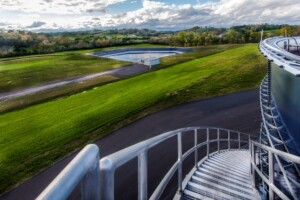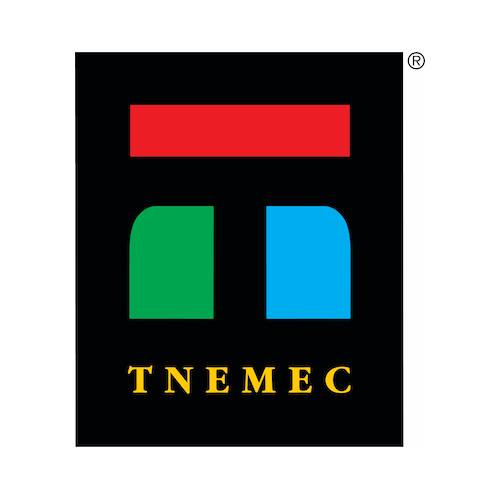Challenge
The Brown and Caldwell/Haskell Joint Venture (JV) designed and constructed a new process water reclamation facility (PWRF) to provide a long-term solution for process water management that allows for future production growth and water reuse at the 1908-built Bush Brothers & Company main production facility in Chestnut Hill, Tennessee.
Bush Brothers & Company (BB&C) is a family-owned corporation best known for its Bush’s Best canned baked beans. The company produces approximately 80 percent of the canned baked beans consumed in the United States, representing estimated annual sales in excess of $400 million and the processing of more than 55 million pounds of beans per year. Its canned goods are sold through retail food outlets and food service operators throughout the United States and Canada.
The project involved planning, process design, detailed design and construction services for the replacement of an existing process water pretreatment system with a new PWRF. The vision for the new PWRF was to treat production process water to a higher effluent quality for reuse within the PWRF and for potential future reuse within the production facility. Additionally, sustainable reuse of process water for agricultural use played a role in the design of the new PWRF.
The project had three major goals: (1) organically treat the vegetable wastewater to a high degree of purity, (2) reduce the demands on source water, and (3) enable future alternatives disposal of the balance of treated wastewater.
Approach
BB&C used a unique design-build (DB) procurement effort seeking directly related experience, innovation and best value: BB&C requested and reviewed preliminary, conceptual design documents from three select, prequalified firms, for which each firm was compensated. With conceptual design recommendations from each of the three firms, BB&C evaluated qualifications, experience, work plan, and staff commitments and made key decisions about the project scope and work plan before choosing the Brown and Caldwell/Haskell JV as its DB partner.
The procurement process followed DB best practices by encouraging collaboration between the proposers and BB&C while facilitating a clear evaluation and selection process that was transparent and fair. This gave BB&C the best opportunity to request successful technical and delivery solutions to address project challenges and objectives. Additionally, BB&C leveraged best practices as it placed value in seeking innovative rather than wholly prescriptive technical concepts, balanced with price and schedule considerations. In keeping with DB best practices, BB&C compensated all the proposers for their design work based on budgets agreed upon beforehand.
To meet BB&C’s increasing need for innovation and custom solutions, the Brown and Caldwell/Haskell JV proposed the progressive design-build (PDB) delivery method to accelerate the design and construction schedule, increase collaboration during scope and estimate definition to reduce costs, and collectively make “best-for-project” decisions.
Results
This project was a textbook example of how a PDB project should evolve, so there were no significant disputes. All challenges were handled in a way that achieved the best possible outcome for BB&C, the project, and the Brown and Caldwell/ Haskell JV. While tools for dispute resolution exist within our standard contracts, we have found that the collaborative, trust-based foundation of the PDB philosophy helps to maintain a positive team spirit and friendly working relationships at the project level. The partnering process changes mindsets as it embraces mutual respect for and appreciation of diverse perspectives.
The PWRF is designed to treat production (food/canning) process water to a higher effluent quality for reuse within the PWRF and for potential future reuse within the production facility. The system treats up to 2.1 million gallons per day (mgd) and 193,000 pounds of chemical oxidation demand daily.
Up to 1,200 cubic feet per minute of biogas will be sent to an existing boiler to offset gas costs. Odor control is provided by routing the foul air to the intakes of the aeration blowers that have been coated to protect the linings.
BB&C wanted to recycle the water used in production, sustainably. The project minimizes drawdown of groundwater and purifies it before it is beneficially reused for food production and agriculture—two of the essential elements of human life. The PWRF allows BB&C to harvest energy from its food manufacturing byproducts. BB&C is injecting money back into the local economy by building a socially responsible facility, which was not required by law but promoted by socially conscientious business people, using local labor and sources of supply when possible.
BB&C planned for the future, and the Brown and Caldwell/ Haskell JV made those plans a reality through PDB by designing and installing baseline features for water capture and treatment. This will allow BB&C to minimize its dependence on groundwater sources in the future, thereby substantially reducing its impact on the local environment.
To ensure that the PWRF provided BB&C with the best value for money, the Brown and Caldwell/Haskell JV worked quality management and compliance into every facet of the project. Prior to setting the guaranteed maximum price (GMP) at the preliminary design stage, the Brown and Caldwell/Haskell JV worked with BB&C to achieve $13M of value engineering savings by optimizing the required treatment processes, refining materials selection, and maximizing the use of existing infrastructure for influent process water treatment and conveyance.
After the GMP was set and construction commenced, the PWRF was delivered on schedule while gaining production efficiency to reduce the cost of construction to $2M under budget. Much of the cost savings were achieved when the team prequalified subcontractors and used value-based competitive bids for all subcontracts and material purchases. In many cases, the equipment and materials came from local/regional distributors to keep project capital in the local economy.
Other WCDA member involved: Tnemec (supplier of high-performance protective coatings)
“The planning and coordination of construction interface between the new WWTP and our operating production facility has been very effective. The Brown and Caldwell/Haskell team operates in an open and collaborative environment. Design or field construction challenges are addressed in a direct and objective manner with all parties focused on a common goal of successful project delivery and start-up.”
— Terry Farris, Director of Supply Chain Engineering, Bush Brothers & Company








